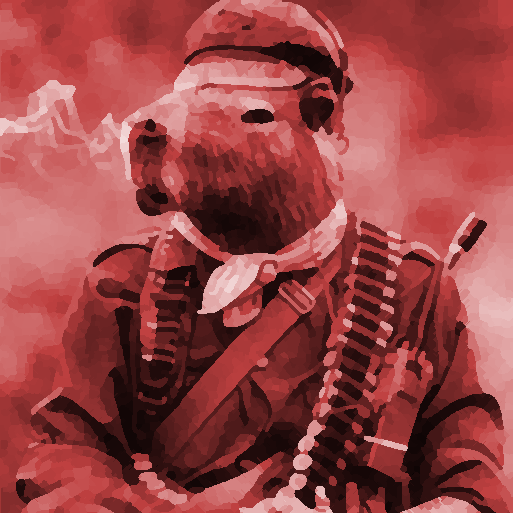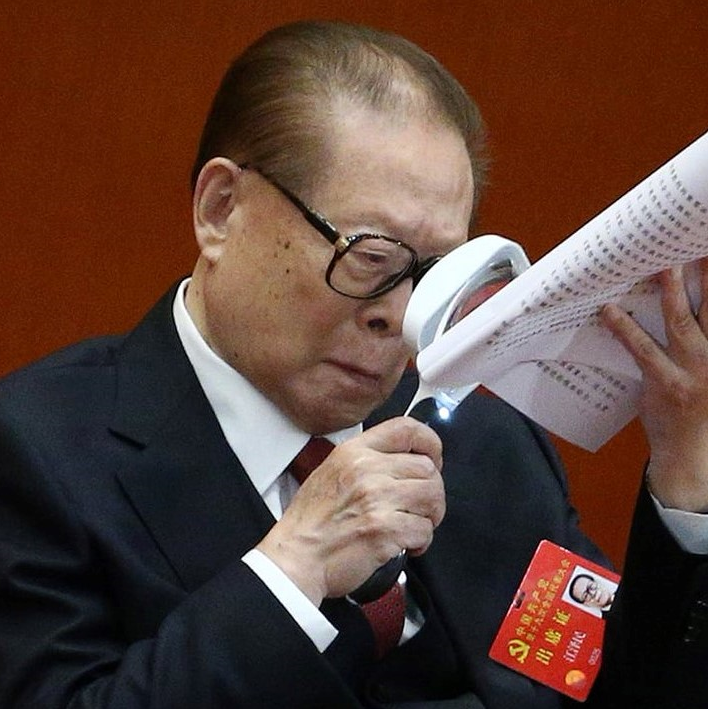Discussion in the Matrix reading group (see this post for instructions on how to join) this Saturday/Sunday, and anyone who’d rather discuss the text here can do so instead (a few questions will be posted here as well) 👌
If anyone wants a reminder on the weekend for this and/or future discussions, mention it in the comments
How do I join the matrix server?
check out the pinned post mentioned in the description (which, in turn, links to this)
Great, thanks.
Examples of questions for the text:
- What is the difference between labour and labour power?
- What is a commodity?
- What is capital?
- What is the exchange value of a commodity?
- What is the price of a commodity?
- What determines the price of a commodity?
- What are wages?
- For the working class as a whole (i.e. individual differences aside), what determines the minimum of wages?
- What is the main difference between how workers use wages and how capitalists use profit?
- How does capital increase?
- What is required for the growth of productive capital?
- What are the three types/aspects of wages?
- As productive capital grows, what is the best possible outcome for the proletariat?
- From the capitalist perspective, the exchange value created by a worker is divided into three parts; which?
- How do wages change as capitalist profit increases and vice versa?
- A capitalist can also increase their profit through competition with other capitalists. How does this affect wages?
- How do increases in productive capital (through greater division of labour and/or greater application of machinery) affect the workers?
- How do increases in productive capital affect classes other than the proletariat?
- How do increases in productive capital affect the periodic crises of capitalism?
How many questions do I need to awnser correctly to earn my certificate?
yes
Yes chairrodent I will do as you order
excellent
Here are my answers (please correct me if anything is wrong) to questions 1-4:
- What is the difference between labour and labour power?
Labour is the act of doing something that produces use value (e.g. making mud pies isn’t labour unless it’s going to be useful in some way). Labour power is a promise to perform labour in some agreed-upon manner in the future.
Labour can’t be sold – once labour begins, it’s already being performed, and nobody would pay for that. You can sell a promise of future labour (labour power).
- What is a commodity?
A commodity is anything made for exchange or production of other commodities, including labour power (i.e. it doesn’t have to be a physical thing). Labour power is the sole (more or less) commodity sold by workers to capitalists; capitalists use the labour power to have labour performed and “imbued” into new commodities that are sold at a later time. In other words, a commodity consists of accumulated labour and the physical resources used by that labour.
- What is capital?
Capital is a commodity (or set of commodities) that is strengthened by living labour, which preserves and increases its exchange value. It consists primarily of means of production (e.g. machines), materials, and money used to buy commodities that strengthen the capital (e.g. labour power).
- What is the exchange value of a commodity?
A commodity’s value is the socially necessary labour (i.e. the labour required to create an average commodity of that type, by an average labourer working at an average speed and efficiency) embodied within it. Its exchange value is the only way in which its value is expressed under capitalism, defined by the relations of exchange between it and every other commodity (simplified through the use of money). The exchange value of every commodity constantly changes, but on average (across changes in supply and demand), it’s proportional to the commodity’s value.
As the socially necessary labour time required to produce an average commodity of a certain type changes, so does its value (e.g. if a new machine halves the amount of time required to produce a certain commodity, the value of all existing commodities of that type will also halve, and the exchange value will eventually equalize around the value).
My answers to the final questions:
- What are the three types/aspects of wages?
- Nominal wages: the money price of labour power
- Real wages: wages relative to the cost of various commodities
- Relative wages: wages relative to how much capital the work produced (i.e. the capitalist’s profit)
- As productive capital grows, what is the best possible outcome for the proletariat?
The demand for labour grows, increasing the nominal wages; however, this also maintains or worsens the relative wages (and potentially the real wages), further increasing the power of the capitalists over workers.
- From the capitalist perspective, the exchange value created by a worker is divided into three parts; which?
- Replacement for the raw materials and wear-and-tear of the instruments of labour
- Replacement for the wages
- Surplus (profit)
- How do wages change as capitalist profit increases and vice versa?
The change in relative wages is inversely proportional to the change in the share of profit; as the share of profit increases, the nominal wages may be unchanged, but the relative wages (and possibly the real wages) fall, and vice versa.
- A capitalist can also increase their profit through competition with other capitalists. How does this affect wages?
- How do increases in productive capital (through greater division of labour and/or greater application of machinery) affect the workers?
Capitalists compete by increasing/improving productive capital, either by a greater division of labour of by improved means of production.
A greater division of labour requires more workers; this increases competition among workers, which makes workers willing to either accept lower wages or perform labour equivalent to what previously required multiple workers for the same wage (and as a worker performs more and more labour, so will the competition, leading to yet lower wages relative to the amount of labour performed). It also simplifies labour, making formerly special skills useless and further increasing competition among workers by lowering the barrier to entry.
Improved means of production (e.g. machinery) has a similar effect as division of labour but at a much greater scale. The new jobs introduced to produce and maintain the new means of production have historically been far fewer than the jobs lost.
- How do increases in productive capital affect classes other than the proletariat?
More and more members of other classes (e.g. small manufacturers) become proletarian as they can’t compete with the bourgeoisie.
- How do increases in productive capital affect the periodic crises of capitalism?
As production increases in scale, so do the crises of capitalism (both in terms of frequency and severity) because of the greater mass of products. The crises are temporarily averted by expanding to new markets, which is obviously unsustainable.
Here are my answers to questions 5-11:
- What is the price of a commodity?
Its exchange value expressed in money.
- What determines the price of a commodity?
Its cost of production, with fluctuations caused by the competition between sellers and sellers, buyers and buyers, and sellers and buyers.
If demand > supply, competition among buyers is high (they’re willing to pay more) and competition among sellers is low or nonexistent.
If supply > demand, competition among sellers is high (they have to sell for less) and competition among buyers is low or nonexistent.
Overproduction leads to lower prices. Intentionally decreased production and gradually increasing prices restores a balance (more or less) between supply and demand.
- What are wages?
The price of labour power.
- For the working class as a whole (i.e. individual differences aside), what determines the minimum of wages?
It’s determined by the cost of production of labour power, meaning
- the education and/or training required by the job
- the cost of maintaining of the average worker (food, housing, etc.)
- the cost of propagating new workers (children)
- What is the main difference between how workers use wages and how capitalists use profit?
A worker sells their labour power to a capitalist for some means of subsistence, which is typically quickly consumed (exchanged for food, water, heating, rent, insurance, etc.). A capitalist sells some means of subsistence (usually money) to many workers in return for their labour power, which is almost entirely used to increase the capitalist’s wealth (maintain and increase their capital).
- How does capital increase?
By using labour power (along with some means of production and typically materials), which creates more value. The new value is then used to purchase more labour power.
- What is required for the growth of productive capital?
Increased division of labour and/or improvement of the means of production. Doing so enables the exploitation of more workers, which further fuels the growth of productive capital.
Something worth considering is brand-name products. People are often willing to pay more for these despite having the same use value as the equivalent commodity with another brand (and they may very well have been made in the same factory). Would the brand-name product in question, if it’s popular enough, be considered a separate commodity from other brands’ commodities with the same use value?
In my view, its just a grift that happened to stick.
of course it’s a grift, but I think it’s worthwhile trying to define what kind of commodity it is
Can metaphysical things be considered commodities? Buying X brand because of “status” is meta bullshit, thats why i would just consider it a grift instead of a commoditie.
In general, ideas as commodities is a grift.
It’s not metaphysical; there has to be physical branding on the commodity (e.g. a logo for clothes, a particular operating system for phones). “Grift” is only a subjective label – everything that’s sold is a commodity, the question is whether commodities with the same use value should be categorized as different kinds of commodities based on branding




